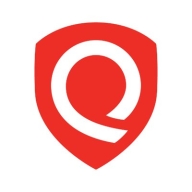

Find out what your peers are saying about Red Hat, Amazon Web Services (AWS), Broadcom and others in Container Management.
By migrating from AWS to Google Cloud Platform, we have saved a lot of time and money.
We saw a return on investment through significant savings in time, money, and resources.
We usually get on calls with tech support, and they are very helpful.
When reaching out via email, they reply quickly.
The response time takes a while.
The autoscaling capabilities of Google Kubernetes Engine have significantly impacted our operations.
Scalability depends on the license and the number of assets being monitored.
Qualys VMDR can handle scalability, although increasing the inventory can raise the licensing costs.
Qualys VMDR's scalability is good, and the customer support is good.
A suitable option would be N2D or beyond, which can onboard all the workloads quickly.
Qualys VMDR is stable.
When looking at the web interface, it feels kind of slow due to the many features involved.
It would be helpful if I could easily find log information in a particular namespace without needing to write certain labels.
Log observability could be made easier so someone from high school can use it without having technological expertise.
One area where Qualys VMDR can be improved is the missing feature for deploying agents for over 1,000 assets, as we need to do it manually.
It does not automate patching unless the patch management module is purchased separately.
If AI features were integrated, it could enhance the capabilities significantly.
Instead, we only pay for the hardware we use, which results in cost-cutting.
The on-demand nodes are quite expensive.
Google is considered cheaper compared to AWS, making it suitable for smaller to medium companies concerning cost.
I have a notion that Qualys might be more expensive than Rapid7.
I would rate the pricing between seven to eight out of ten.
Qualys offers better pricing and is feature-packed compared to other tools.
The most valuable aspect of Google Kubernetes Engine (GKE) is its managed nature, which significantly reduces the burden on our platform team.
GKE is easier to understand and use than Elastic Kubernetes Service.
What I find most valuable is the ability to focus solely on my product without worrying about the Kubernetes infrastructure itself.
The prioritization of vulnerabilities has improved our remediation efforts by around thirty to thirty-five percent.
It impacts my workflow overall, with the patch management features as it has the missing patches listed in detail, making it easier to get a comprehensive report and providing some dashboards that offer visual representation.
The best features Qualys VMDR offers include built-in threat intelligence for prioritizing high-risk vulnerabilities and integrated patch management to remediate a vulnerability, providing coverage on the network level and on the OS level as well.
| Product | Market Share (%) |
|---|---|
| Google Kubernetes Engine | 2.1% |
| Red Hat OpenShift Container Platform | 19.5% |
| Amazon EKS | 11.9% |
| Other | 66.5% |
| Product | Market Share (%) |
|---|---|
| Qualys VMDR | 6.4% |
| Wiz | 10.5% |
| Tenable Nessus | 7.3% |
| Other | 75.8% |


| Company Size | Count |
|---|---|
| Small Business | 20 |
| Midsize Enterprise | 6 |
| Large Enterprise | 15 |
| Company Size | Count |
|---|---|
| Small Business | 20 |
| Midsize Enterprise | 12 |
| Large Enterprise | 69 |
Kubernetes Engine is a managed, production-ready environment for deploying containerized applications. It brings our latest innovations in developer productivity, resource efficiency, automated operations, and open source flexibility to accelerate your time to market.
Vulnerability Management, Detection, and Response (VMDR) is a cornerstone product of the Qualys TruRisk Platform and a global leader in the enterprise-grade vulnerability management (VM) vendor space. With VMDR, enterprises are empowered with visibility and insight into cyber risk exposure - making it easy to prioritize vulnerabilities, assets, or groups of assets based on business risk. Security teams can take action to mitigate risk, helping the business measure their actual risk exposure over time.
Qualys VMDR offers an all-inclusive risk-based vulnerability management solution to prioritize vulnerabilities and assets based on risk and business criticality. VMDR seamlessly integrates with configuration management databases (CMDB), Qualys Patch Management, Custom Assessment and Remediation (CAR), Qualys TotalCloud and other Qualys and non-Qualys solutions to facilitate vulnerability detection and remediation across the entire enterprise.
With VMDR, users are empowered with actionable risk insights that translate vulnerabilities and exploits into optimized remediation actions based on business impact. Qualys customers can now aggregate and orchestrate data from the Qualys Threat Library, 25+ threat intelligence feeds, and third-party security and IT solutions, empowering organizations to measure, communicate, and eliminate risk across on-premises, hybrid, and cloud environments.
We monitor all Container Management reviews to prevent fraudulent reviews and keep review quality high. We do not post reviews by company employees or direct competitors. We validate each review for authenticity via cross-reference with LinkedIn, and personal follow-up with the reviewer when necessary.